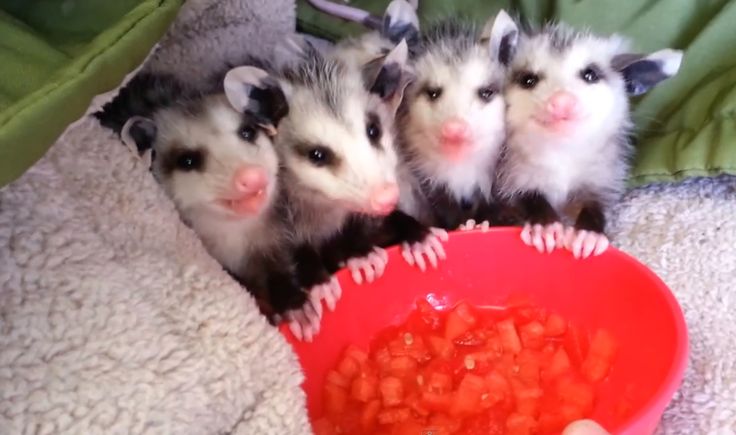When do babies typically cluster feed
Cluster Feeding: Ages, Signs and Tips
By the time baby arrives, you’ve probably mentally prepared for the frequent wakeups you’re about to endure. Sleep deprivation as a new parent is par for the course, after all. What may come as a surprise, however, is the pure exhaustion that accompanies newborn cluster feeding. It’s one of those new parenting things you won’t truly understand until you actually experience it; but it’s totally normal and, thankfully, doesn’t last forever (though it won’t feel like much of a consolation when you’re in the thick of it). Still, it’s helpful to know what to expect so you can mindfully manage the situation rather than panic when the feeding frenzy begins. Ready to get the lowdown on all things newborn cluster feeding? We’re sharing what it is, why it happens, when it starts and how long it’ll last—plus, some tips for how to cluster feed and prepare yourself for the nonstop breast or bottle buffet ahead.
In this article:
What is cluster feeding?
Why do babies cluster feed?
When does cluster feeding start?
How long does cluster feeding last?
Signs of cluster feeding
Tips for how to cluster feed
How to stop cluster feeding
What Is Cluster Feeding?
You may have heard the term thrown around by other parents, or perhaps a lactation consultant said it during a blurry bedside visit at the hospital. So what is cluster feeding, exactly? Baby cluster feeding is pretty much what it sounds like: when your little one wants to be fed in “clusters” throughout the day. Cathleen Hemphill, RN, a nurse and lactation consultant in Raleigh, North Carolina, explains that in their first few days of life, babies typically need to be fed a minimum of eight times in a 24-hour span. But before you set your clock and your expectations, know that newborns typically don’t follow a predictable feeding schedule. “Most infants will want to feed more often than this and will cluster or group several feedings in a shorter amount of time,” Hemphill says.
In general, a typical feeding for a newborn will last between 15 and 20 minutes, leaving baby nourished and satisfied for about three to four hours, according to the American Academy of Pediatrics (AAP). In contrast, when they’re cluster feeding, “a baby has several feedings within a short amount of time followed by a longer stretch of sleep,” says Amy Peterson, IBCLC, a lactation consultant in Jerome, Idaho. You’ll know that baby is cluster feeding—and that it’s not just their preferred eating schedule—when their routine suddenly changes for two or three days and then just as swiftly returns to a more regular feeding pace.
You’ll know that baby is cluster feeding—and that it’s not just their preferred eating schedule—when their routine suddenly changes for two or three days and then just as swiftly returns to a more regular feeding pace.
Cluster feeding is completely normal, and while not every baby cluster feeds, it can happen with any newborn, regardless of whether they’re breastfed or formula-fed. That said, it’s often harder if you’re a nursing mom, as your milk is likely still coming in, and you may be struggling with breastfeeding—physically or mentally. If you’re exclusively pumping, it may feel like you can’t keep up with baby’s demands—especially if you don’t have a reserve of milk ready to go yet. That said, if you formula feed, you’ll still notice baby’s increased appetite but will have the convenience of being able to supply more milk on demand, which the AAP says is a safe and appropriate way to manage cluster feeding.
Why Do Babies Cluster Feed?
No one knows exactly why babies cluster feed, says Dyan Hes, MD, a pediatrician in New York City, but there are several strong theories.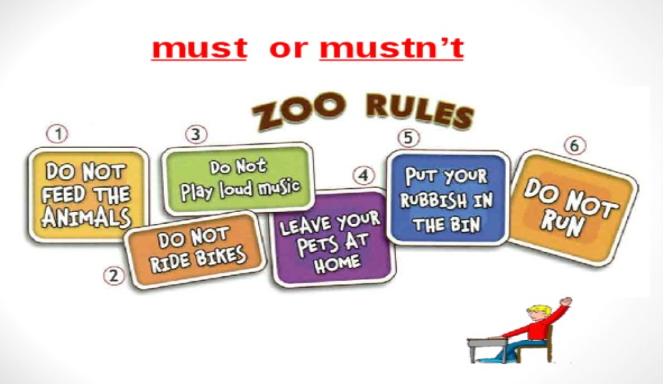 A common belief among experts is that it happens when a newborn is going through a physical or developmental growth spurt. Newborn cluster feeding could also correlate with baby’s routine in utero. “Most pregnant mothers know from fetal movements that as soon as they go to bed, their baby starts moving, and then about four hours later, they have to get up to the bathroom. This is a biological rhythm of activity that continues for the first weeks of life. We see infants feed well around a mother’s previous bedtime, then four hours later they will perhaps start to cluster feed,” explains Hemphill.
A common belief among experts is that it happens when a newborn is going through a physical or developmental growth spurt. Newborn cluster feeding could also correlate with baby’s routine in utero. “Most pregnant mothers know from fetal movements that as soon as they go to bed, their baby starts moving, and then about four hours later, they have to get up to the bathroom. This is a biological rhythm of activity that continues for the first weeks of life. We see infants feed well around a mother’s previous bedtime, then four hours later they will perhaps start to cluster feed,” explains Hemphill.
If you’re breastfeeding, newborn cluster feeding may cause you to worry or wonder if baby’s increased appetite is indicative of low milk supply or if you’re just not feeding them enough. It’s understandable why your mind would jump to that conclusion, but in reality, the opposite is happening. “In the first few days, a baby’s cluster feeding helps to increase and establish mom’s milk supply,” explains Jerrianne Webb, RN, a nurse and lactation consultant in Raleigh, North Carolina. “The baby’s frequent nursing assists in the hormonal process of transitioning mom’s first milk, colostrum, into the abundant mature milk, a transition that usually occurs between postpartum days three and seven.”
“The baby’s frequent nursing assists in the hormonal process of transitioning mom’s first milk, colostrum, into the abundant mature milk, a transition that usually occurs between postpartum days three and seven.”
Oftentimes, babies cluster feed in the early evening, according to Hes, which also happens to coincide with the infamous “witching hour” for babies. Since the only way cluster-feeding babies know how to express their need to eat is through crying, it can be difficult to discern whether they’re being fussy because they’re hungry or because it’s just that time of day. If baby is inconsolable in the early evening but doesn’t seem to want to eat, it could be the result of overstimulation or possibly colic.
When Does Cluster Feeding Start?
Now that you understand what it is and why it happens, you may be wondering: When does cluster feeding start? Sorry to say, you may not get much of a breather after the exhausting work of labor and delivery. According to Hemphill, newborn cluster feeding can start as early as baby’s second day of life. While this may be the last thing you want to deal with while recovering and trying to get the hang of this whole breastfeeding thing, it can actually be very helpful. “[Cluster feeding] is the principle of supply and demand in breastfeeding,” explains Webb. “Baby’s demand [for milk] increases, which, in turn, increases Mom’s supply.” In those first few days after baby is born, the body is working hard to produce milk and increase supply as needed, and since this is triggered by baby feeding from the breast, the more often they feed, the more milk the body will ultimately produce.
While this may be the last thing you want to deal with while recovering and trying to get the hang of this whole breastfeeding thing, it can actually be very helpful. “[Cluster feeding] is the principle of supply and demand in breastfeeding,” explains Webb. “Baby’s demand [for milk] increases, which, in turn, increases Mom’s supply.” In those first few days after baby is born, the body is working hard to produce milk and increase supply as needed, and since this is triggered by baby feeding from the breast, the more often they feed, the more milk the body will ultimately produce.
How Long Does Cluster Feeding Last?
You’re sleep-deprived and desperate for relief—so you want to know: Exactly how long does cluster feeding last? Baby cluster feeding happens in bursts; each usually lasts a few days at a time, says Webb. However, during the first few weeks of life, as your supply continues to build, you can expect baby to want to cluster feed more often than not. After this initial stage, though, you’ll be more equipped to determine if and when baby will go through another cluster feeding phase based on typical development charts. “After the first few weeks, breastfed babies become more predictable,” she says. Cluster feeding ages typically align with growth spurts and occur at three weeks, six weeks, three months and six months. That said, the first three weeks of newborn cluster feeding is often the longest consistent stretch and the most intense for parents.
“After the first few weeks, breastfed babies become more predictable,” she says. Cluster feeding ages typically align with growth spurts and occur at three weeks, six weeks, three months and six months. That said, the first three weeks of newborn cluster feeding is often the longest consistent stretch and the most intense for parents.
Signs of Cluster Feeding
As babies grow, they slowly start needing more and more milk in one feeding to satisfy their appetite. So how do you know if their increased need for milk is, in fact, cluster feeding or just part of their normal growth and development? Here are some common signs of cluster feeding to look for:
- Having a normal, full feeding, and then wanting to be fed again 30 to 60 minutes later—often eating just as much as they would in a regular feeding
- Sleeping deeply for long stretches of time after two or three close feedings
- Acting frustrated during feedings, searching for the nipple when it’s right in front of them or latching on and off
- Acting fussy or irritable when they’re awake but not on the breast
- Eating in frequent, short spurts close together
- Perpetual feedings often occur in the early evening and nighttime hours
Tips for How to Cluster Feed
For a breastfeeding parent, cluster feeding is exhausting in every sense of the word, especially if you’re still trying to get the hang of nursing. Here are some things you can do to make it a little more manageable:
Here are some things you can do to make it a little more manageable:
- Keep track of how many feedings the baby has had. Peterson says, “Cluster feeders still have the expected number of feeds, just not spaced evenly throughout the day/night.”
- Have your partner or a support person help by doing as much as possible between feedings so you can rest
- Avoid trying to force or delay feedings in an effort to get baby back on a schedule, as this will just make them fussier
- Monitor their weight gain if you need peace of mind that they’re getting enough milk, suggests Peterson. “Expect babies to gain about an ounce a day (or more) once mom’s milk shifts from colostrum to milk,” she says
- Stay hydrated and nourished to keep yourself healthy and your supply ample throughout this phase
How to Stop Cluster Feeding
You may be eager to get a little break, but if you’re wondering how to stop cluster feeding, the truth is: it just has to run its course. The best thing you can do is surrender and let baby take the lead. Hemphill stresses the importance of not forcing or delaying feedings in an effort to make cluster feeding end: “The American Academy of Pediatrics, WHO, and UNICEF recommend that infants feed on demand and as often as they want, day or night.”
The best thing you can do is surrender and let baby take the lead. Hemphill stresses the importance of not forcing or delaying feedings in an effort to make cluster feeding end: “The American Academy of Pediatrics, WHO, and UNICEF recommend that infants feed on demand and as often as they want, day or night.”
Newborn cluster feeding is hard on parents, but you can take comfort knowing that it won’t last forever. Until it passes, lean on your support system and rest as often as possible. You’ve got this.
About the experts:
Cathleen Hemphill, RN, BSN, IBCLC, is a nurse and lactation consultant at the University of North Carolina’s Rex Hospital in Raleigh, North Carolina.
Dyan Hes, MD, is a pediatrician and the medical director of Gramercy Pediatrics in New York City. She earned her medical degree from the Sackler School of Medicine at Tel-Aviv University in 1997.
Amy Peterson, IBCLC, is a lactation consultant for Evenflo Feeding and co-author of Balancing Breast and Bottle: Feeding Your Baby. She holds a Bachelor’s degree in early childhood education and works out of Jerome, Idaho.
She holds a Bachelor’s degree in early childhood education and works out of Jerome, Idaho.
Jerrianne Webb, RN, IBCLC, is a lactation consultant for the University of North Carolina. She earned her nursing degree from Presbyterian Hospital School of Nursing in Charlotte, North Carolina.
Please note: The Bump and the materials and information it contains are not intended to, and do not constitute, medical or other health advice or diagnosis and should not be used as such. You should always consult with a qualified physician or health professional about your specific circumstances.
Plus, more from The Bump:
How Much Should a Newborn Eat?
Are There Foods to Avoid While Breastfeeding?
Top 12 Benefits of Breastfeeding
Cluster Feeding: Ages, Signs and Tips
By the time baby arrives, you’ve probably mentally prepared for the frequent wakeups you’re about to endure. Sleep deprivation as a new parent is par for the course, after all. What may come as a surprise, however, is the pure exhaustion that accompanies newborn cluster feeding. It’s one of those new parenting things you won’t truly understand until you actually experience it; but it’s totally normal and, thankfully, doesn’t last forever (though it won’t feel like much of a consolation when you’re in the thick of it). Still, it’s helpful to know what to expect so you can mindfully manage the situation rather than panic when the feeding frenzy begins. Ready to get the lowdown on all things newborn cluster feeding? We’re sharing what it is, why it happens, when it starts and how long it’ll last—plus, some tips for how to cluster feed and prepare yourself for the nonstop breast or bottle buffet ahead.
What may come as a surprise, however, is the pure exhaustion that accompanies newborn cluster feeding. It’s one of those new parenting things you won’t truly understand until you actually experience it; but it’s totally normal and, thankfully, doesn’t last forever (though it won’t feel like much of a consolation when you’re in the thick of it). Still, it’s helpful to know what to expect so you can mindfully manage the situation rather than panic when the feeding frenzy begins. Ready to get the lowdown on all things newborn cluster feeding? We’re sharing what it is, why it happens, when it starts and how long it’ll last—plus, some tips for how to cluster feed and prepare yourself for the nonstop breast or bottle buffet ahead.
In this article:
What is cluster feeding?
Why do babies cluster feed?
When does cluster feeding start?
How long does cluster feeding last?
Signs of cluster feeding
Tips for how to cluster feed
How to stop cluster feeding
What Is Cluster Feeding?
You may have heard the term thrown around by other parents, or perhaps a lactation consultant said it during a blurry bedside visit at the hospital. So what is cluster feeding, exactly? Baby cluster feeding is pretty much what it sounds like: when your little one wants to be fed in “clusters” throughout the day. Cathleen Hemphill, RN, a nurse and lactation consultant in Raleigh, North Carolina, explains that in their first few days of life, babies typically need to be fed a minimum of eight times in a 24-hour span. But before you set your clock and your expectations, know that newborns typically don’t follow a predictable feeding schedule. “Most infants will want to feed more often than this and will cluster or group several feedings in a shorter amount of time,” Hemphill says.
So what is cluster feeding, exactly? Baby cluster feeding is pretty much what it sounds like: when your little one wants to be fed in “clusters” throughout the day. Cathleen Hemphill, RN, a nurse and lactation consultant in Raleigh, North Carolina, explains that in their first few days of life, babies typically need to be fed a minimum of eight times in a 24-hour span. But before you set your clock and your expectations, know that newborns typically don’t follow a predictable feeding schedule. “Most infants will want to feed more often than this and will cluster or group several feedings in a shorter amount of time,” Hemphill says.
In general, a typical feeding for a newborn will last between 15 and 20 minutes, leaving baby nourished and satisfied for about three to four hours, according to the American Academy of Pediatrics (AAP). In contrast, when they’re cluster feeding, “a baby has several feedings within a short amount of time followed by a longer stretch of sleep,” says Amy Peterson, IBCLC, a lactation consultant in Jerome, Idaho. You’ll know that baby is cluster feeding—and that it’s not just their preferred eating schedule—when their routine suddenly changes for two or three days and then just as swiftly returns to a more regular feeding pace.
You’ll know that baby is cluster feeding—and that it’s not just their preferred eating schedule—when their routine suddenly changes for two or three days and then just as swiftly returns to a more regular feeding pace.
Cluster feeding is completely normal, and while not every baby cluster feeds, it can happen with any newborn, regardless of whether they’re breastfed or formula-fed. That said, it’s often harder if you’re a nursing mom, as your milk is likely still coming in, and you may be struggling with breastfeeding—physically or mentally. If you’re exclusively pumping, it may feel like you can’t keep up with baby’s demands—especially if you don’t have a reserve of milk ready to go yet. That said, if you formula feed, you’ll still notice baby’s increased appetite but will have the convenience of being able to supply more milk on demand, which the AAP says is a safe and appropriate way to manage cluster feeding.
Why Do Babies Cluster Feed?
No one knows exactly why babies cluster feed, says Dyan Hes, MD, a pediatrician in New York City, but there are several strong theories. A common belief among experts is that it happens when a newborn is going through a physical or developmental growth spurt. Newborn cluster feeding could also correlate with baby’s routine in utero. “Most pregnant mothers know from fetal movements that as soon as they go to bed, their baby starts moving, and then about four hours later, they have to get up to the bathroom. This is a biological rhythm of activity that continues for the first weeks of life. We see infants feed well around a mother’s previous bedtime, then four hours later they will perhaps start to cluster feed,” explains Hemphill.
A common belief among experts is that it happens when a newborn is going through a physical or developmental growth spurt. Newborn cluster feeding could also correlate with baby’s routine in utero. “Most pregnant mothers know from fetal movements that as soon as they go to bed, their baby starts moving, and then about four hours later, they have to get up to the bathroom. This is a biological rhythm of activity that continues for the first weeks of life. We see infants feed well around a mother’s previous bedtime, then four hours later they will perhaps start to cluster feed,” explains Hemphill.
If you’re breastfeeding, newborn cluster feeding may cause you to worry or wonder if baby’s increased appetite is indicative of low milk supply or if you’re just not feeding them enough. It’s understandable why your mind would jump to that conclusion, but in reality, the opposite is happening. “In the first few days, a baby’s cluster feeding helps to increase and establish mom’s milk supply,” explains Jerrianne Webb, RN, a nurse and lactation consultant in Raleigh, North Carolina. “The baby’s frequent nursing assists in the hormonal process of transitioning mom’s first milk, colostrum, into the abundant mature milk, a transition that usually occurs between postpartum days three and seven.”
“The baby’s frequent nursing assists in the hormonal process of transitioning mom’s first milk, colostrum, into the abundant mature milk, a transition that usually occurs between postpartum days three and seven.”
Oftentimes, babies cluster feed in the early evening, according to Hes, which also happens to coincide with the infamous “witching hour” for babies. Since the only way cluster-feeding babies know how to express their need to eat is through crying, it can be difficult to discern whether they’re being fussy because they’re hungry or because it’s just that time of day. If baby is inconsolable in the early evening but doesn’t seem to want to eat, it could be the result of overstimulation or possibly colic.
When Does Cluster Feeding Start?
Now that you understand what it is and why it happens, you may be wondering: When does cluster feeding start? Sorry to say, you may not get much of a breather after the exhausting work of labor and delivery. According to Hemphill, newborn cluster feeding can start as early as baby’s second day of life. While this may be the last thing you want to deal with while recovering and trying to get the hang of this whole breastfeeding thing, it can actually be very helpful. “[Cluster feeding] is the principle of supply and demand in breastfeeding,” explains Webb. “Baby’s demand [for milk] increases, which, in turn, increases Mom’s supply.” In those first few days after baby is born, the body is working hard to produce milk and increase supply as needed, and since this is triggered by baby feeding from the breast, the more often they feed, the more milk the body will ultimately produce.
While this may be the last thing you want to deal with while recovering and trying to get the hang of this whole breastfeeding thing, it can actually be very helpful. “[Cluster feeding] is the principle of supply and demand in breastfeeding,” explains Webb. “Baby’s demand [for milk] increases, which, in turn, increases Mom’s supply.” In those first few days after baby is born, the body is working hard to produce milk and increase supply as needed, and since this is triggered by baby feeding from the breast, the more often they feed, the more milk the body will ultimately produce.
How Long Does Cluster Feeding Last?
You’re sleep-deprived and desperate for relief—so you want to know: Exactly how long does cluster feeding last? Baby cluster feeding happens in bursts; each usually lasts a few days at a time, says Webb. However, during the first few weeks of life, as your supply continues to build, you can expect baby to want to cluster feed more often than not. After this initial stage, though, you’ll be more equipped to determine if and when baby will go through another cluster feeding phase based on typical development charts. “After the first few weeks, breastfed babies become more predictable,” she says. Cluster feeding ages typically align with growth spurts and occur at three weeks, six weeks, three months and six months. That said, the first three weeks of newborn cluster feeding is often the longest consistent stretch and the most intense for parents.
“After the first few weeks, breastfed babies become more predictable,” she says. Cluster feeding ages typically align with growth spurts and occur at three weeks, six weeks, three months and six months. That said, the first three weeks of newborn cluster feeding is often the longest consistent stretch and the most intense for parents.
Signs of Cluster Feeding
As babies grow, they slowly start needing more and more milk in one feeding to satisfy their appetite. So how do you know if their increased need for milk is, in fact, cluster feeding or just part of their normal growth and development? Here are some common signs of cluster feeding to look for:
- Having a normal, full feeding, and then wanting to be fed again 30 to 60 minutes later—often eating just as much as they would in a regular feeding
- Sleeping deeply for long stretches of time after two or three close feedings
- Acting frustrated during feedings, searching for the nipple when it’s right in front of them or latching on and off
- Acting fussy or irritable when they’re awake but not on the breast
- Eating in frequent, short spurts close together
- Perpetual feedings often occur in the early evening and nighttime hours
Tips for How to Cluster Feed
For a breastfeeding parent, cluster feeding is exhausting in every sense of the word, especially if you’re still trying to get the hang of nursing. Here are some things you can do to make it a little more manageable:
Here are some things you can do to make it a little more manageable:
- Keep track of how many feedings the baby has had. Peterson says, “Cluster feeders still have the expected number of feeds, just not spaced evenly throughout the day/night.”
- Have your partner or a support person help by doing as much as possible between feedings so you can rest
- Avoid trying to force or delay feedings in an effort to get baby back on a schedule, as this will just make them fussier
- Monitor their weight gain if you need peace of mind that they’re getting enough milk, suggests Peterson. “Expect babies to gain about an ounce a day (or more) once mom’s milk shifts from colostrum to milk,” she says
- Stay hydrated and nourished to keep yourself healthy and your supply ample throughout this phase
How to Stop Cluster Feeding
You may be eager to get a little break, but if you’re wondering how to stop cluster feeding, the truth is: it just has to run its course. The best thing you can do is surrender and let baby take the lead. Hemphill stresses the importance of not forcing or delaying feedings in an effort to make cluster feeding end: “The American Academy of Pediatrics, WHO, and UNICEF recommend that infants feed on demand and as often as they want, day or night.”
The best thing you can do is surrender and let baby take the lead. Hemphill stresses the importance of not forcing or delaying feedings in an effort to make cluster feeding end: “The American Academy of Pediatrics, WHO, and UNICEF recommend that infants feed on demand and as often as they want, day or night.”
Newborn cluster feeding is hard on parents, but you can take comfort knowing that it won’t last forever. Until it passes, lean on your support system and rest as often as possible. You’ve got this.
About the experts:
Cathleen Hemphill, RN, BSN, IBCLC, is a nurse and lactation consultant at the University of North Carolina’s Rex Hospital in Raleigh, North Carolina.
Dyan Hes, MD, is a pediatrician and the medical director of Gramercy Pediatrics in New York City. She earned her medical degree from the Sackler School of Medicine at Tel-Aviv University in 1997.
Amy Peterson, IBCLC, is a lactation consultant for Evenflo Feeding and co-author of Balancing Breast and Bottle: Feeding Your Baby. She holds a Bachelor’s degree in early childhood education and works out of Jerome, Idaho.
She holds a Bachelor’s degree in early childhood education and works out of Jerome, Idaho.
Jerrianne Webb, RN, IBCLC, is a lactation consultant for the University of North Carolina. She earned her nursing degree from Presbyterian Hospital School of Nursing in Charlotte, North Carolina.
Please note: The Bump and the materials and information it contains are not intended to, and do not constitute, medical or other health advice or diagnosis and should not be used as such. You should always consult with a qualified physician or health professional about your specific circumstances.
Plus, more from The Bump:
How Much Should a Newborn Eat?
Are There Foods to Avoid While Breastfeeding?
Top 12 Benefits of Breastfeeding
Extension at school: we analyze the pros and cons
Extension at school will help parents free up time for work and personal affairs and not worry about the child. We tell you by what rules schools organize an extension program and how to make a decision whether to send a child there or not.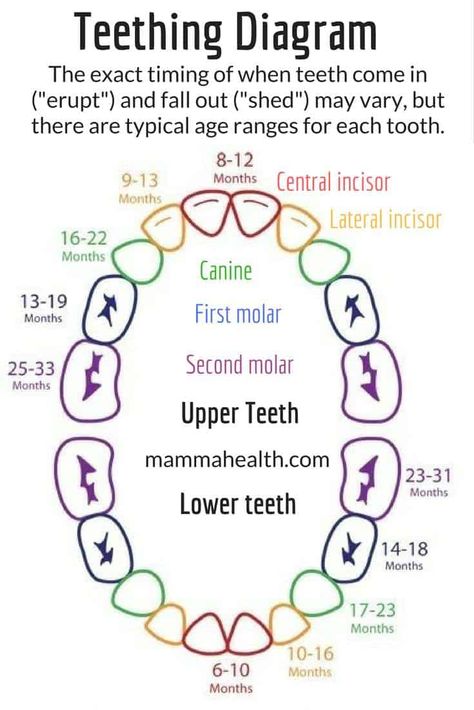
What is an extended stay
Extended day or extended day group - is a group of extra stay after school for students in grades 1-4. The extension is organized on the territory of the school. At this time, the teacher is engaged with the children.
How exactly the extended day is organized in your school is determined by the Regulations on the extended day group (GPA). The regulation must comply with the requirements of the federal law "On Education", as well as sanitary rules and regulations (SanPinam), which are formulated in the relevant provisions of Rospotrebnadzor. It is signed by the principal of the school. Therefore, before giving the child for an extension, study this document. And pay attention to the following points:
Number of children
The number of children is determined by each school individually and depends on the number of applications submitted and the possibilities of the school. Usually on the extension - from 25 or more children, but sometimes less.
Usually on the extension - from 25 or more children, but sometimes less.
Extension time
As a rule, the extension period starts right after the lessons, at 12-13 o'clock, and lasts until 16-18 o'clock. Time often depends on the availability of premises and the workload of teachers.
Meals
Children have lunch and afternoon snack at the expense of their parents. Exception - children from large and low-income families who are eligible for benefits. They are compensated for the cost of food from the budget of the region. What is lunch itself - depends on the school. Somewhere, children on extension meals eat in the school canteen, somewhere they receive dry rations, somewhere special school food organizations bring lunches.
Walks
An extended walk must last at least an hour. It usually starts right after lunch so that the children can take a break from sitting at their desks. The walk takes place in the school yard, where the teacher organizes sports and outdoor games for children. In bad weather during the walking time, children play inside the school.
The walk takes place in the school yard, where the teacher organizes sports and outdoor games for children. In bad weather during the walking time, children play inside the school.
Homework
Homework for the extension period starts no earlier than 1.5–2 hours after the end of the lessons. Homework usually takes 1.5-2.5 hours. In the first grade, homework is not provided, in the second grade, children study no more than 1.5 hours, in the third and fourth grades - no more than 2.5 hours.
Additional classes
As a rule, in addition to completing lessons, children attend hobby groups during the extension. It can be drawing, needlework, dancing, modeling, entertaining mathematics or programming. It all depends on what options are available in a particular school. An extension teacher can also organize classes. He arranges quizzes, plays board games, reads aloud, and so on. Find out in advance who will work as a teacher in your after-school group and what activities with children he is going to conduct.
Extension benefits
Babysitting
You don't have to worry about him being alone at home. The teacher of the extended day group is responsible for the safety of children. You can’t just go “to nowhere” with an extension, the parents themselves must pick up the child.
Doing homework
Extension at school means doing homework. If the child has questions and difficulties, the teacher helps to complete the tasks. Many children like to do homework together, consulting and discussing the material. In addition, during the extension, the time for doing homework is limited, which makes the child more collected. And the lessons do not drag on indefinitely, as sometimes happens at home.
Communication and movement
During the extension, the child communicates not only with classmates, but also with children from parallel classes. This allows him to expand his social circle, find new friends and learn to interact with different people.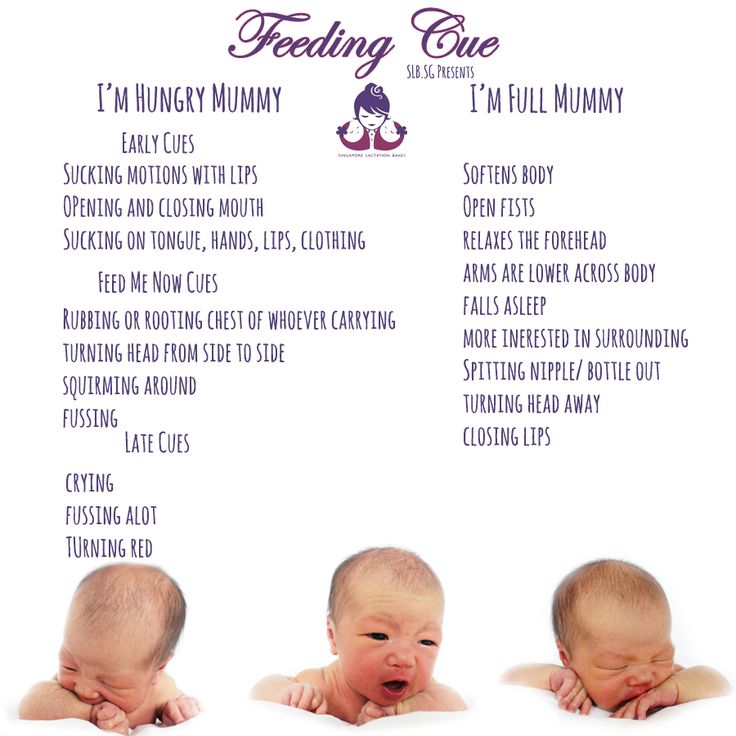 And walks and sports games on the extension allow the child to relax and recuperate much better than TV or gadgets.
And walks and sports games on the extension allow the child to relax and recuperate much better than TV or gadgets.
Time for yourself
This is a very important plus, because often parents cannot leave work early to pick up their child. It also gives you the opportunity to take time for yourself. While the child is engaged in school, you can restore strength: take a walk, meet friends, go to the pool. 9Cons If this is a full meal in the school cafeteria - is great. If it's just a snack or dry ration, such food is not very useful for children's health. In this case, it is worth clarifying whether it is possible to give the child lunch with you, or even think about the need for an extension.
Too many children
If there are 30-40 people in an after-school group, there will be no individual approach to children in it. The teacher is unlikely to be able to help everyone with homework and quickly solve the everyday difficulties of any nature that arise in the child.
Communication overabundance
Not all children feel comfortable communicating with peers all day long. Someone needs to be alone or in silence to work out their favorite hobby. If your child gets tired of the team, he will be uncomfortable during the extension.
At the same time making a career, taking care of a family and recovering on time is not an easy task. Tetrika online school will help you free up time for yourself. Our tutors will do homework with the child, interest the subject and turn the learning process into an exciting adventure. Sign up for a free trial lesson.
Falling in love with learning in the classroom at Tetrika online school
Leave a request and get a free introductory lesson
Forest animals for children - interesting facts about forest animals
Forests are the habitat of most unique animals. Here it is easier for them to find food and shelter. Let's see what animals live in the forest, what they eat there and what else is known about them.
Let's see what animals live in the forest, what they eat there and what else is known about them.
Mostly wild animals in their natural habitat avoid humans. Still, it is worth knowing how best to act when meeting such animals. We will talk about this too.
Bear
Big strong beast with dark brown or brown hair and clawed feet - everyone seems to know what a bear looks like. In fairy tales, he has an "image" of clumsy and clumsy. In fact, the bears that live in the forest are very dexterous, able to move almost silently - even run - and climb trees. Bears feed on berries, nuts, fruits, oats and insects. They love to fish with their paws.
By the way, everyone knows the expression "sucking a paw" - they usually say that, meaning "get by on little", and sometimes - "sit without money." It is believed that bears suck their paws (literally) in their sleep when they wait out the winter in a den - in a snow-covered hole, under the roots of a fallen tree or in a pile of brushwood. They don't actually suck - maybe they just warm their paws with their breath.
They don't actually suck - maybe they just warm their paws with their breath.
Bear cubs are born blind in the middle of winter and come out of the den in spring, fed by the mother bear's milk. In addition to the mother, the cubs are looked after by the nursery - this is the name of the nanny - the elder sister of the cubs. "Children" are usually playful, climbing trees and somersaulting.
Nevertheless, it cannot be said that bears are so good-natured. Just like that, this beast will not attack a person, but if, for example, you disturb him in a den or if a bear decides that you are a danger to cubs, an unexpected meeting in the forest can end in disaster. Experts advise travelers to avoid dense bushes and thickets in the forest, if possible, talk and sing loudly during the walk - this way you will not catch the bear by surprise and avoid danger.
Wolf
The wolf that lives in the forest looks like a shepherd dog - no wonder, because it is from the wolf that all dogs trace their ancestry. But you can still distinguish a wolf: it is larger than a dog and never twists its tail into a ring. And he does not bark, but howls or growls. Its fur is gray or reddish, thick and warm.
But you can still distinguish a wolf: it is larger than a dog and never twists its tail into a ring. And he does not bark, but howls or growls. Its fur is gray or reddish, thick and warm.
In fairy tales, the wolf is considered a cunning, formidable and evil animal. He received such “glory” because he is a predator - he eats the flesh of animals obtained during hunting: roe deer, hares, foxes, badgers, mice, marmots, wild geese and others. Sometimes wolves even kill their own kind.
Berries, fruits and mushrooms are also included in the wolf's diet. Sometimes wolves steal watermelons and melons from farms - all because these animals are often thirsty: they have a high need for water.
Wolves mostly hunt in packs - and not where they live. Even if the wolf's lair is located next to a farm or village, the animals will not give themselves away, because they will hunt far away - perhaps kilometers - from the "place of residence".
Seeing a wolf in the forest, it is better to retreat quietly, while not looking into his eyes, or leave altogether. At the same time, it should not be considered a “bad” animal - it is a dexterous, fast, intelligent and strong animal. And wolves are good parents: she-wolves feed their cubs with milk and always protect them from dangers. Wolf cubs are born deaf and blind, so at first they are completely defenseless. When they grow up a little, their parents bring them live prey - not only for food, but for play and passive "hunting".
At the same time, it should not be considered a “bad” animal - it is a dexterous, fast, intelligent and strong animal. And wolves are good parents: she-wolves feed their cubs with milk and always protect them from dangers. Wolf cubs are born deaf and blind, so at first they are completely defenseless. When they grow up a little, their parents bring them live prey - not only for food, but for play and passive "hunting".
Fox
Cunning, cunning and smart - this is how the fox appears before us in fairy tales and fables. Indeed, this animal often lives not far from people - not in a dense forest, but closer to the edge, and sometimes near fields and ravines - but does not betray itself. And the fox is also very observant: for example, it is not afraid of dogs sitting on a chain, or people working in the field who do not notice it.
But if it is suddenly in danger, the fox hides swiftly, practically flattening itself above the ground on the run, and it is extremely difficult to catch it. The balance when running and jumping helps the fox to keep the tail - fluffy and red, sometimes white or black at the tip. The fur of the fox is red, the muzzle is narrow, the paws and ears are black.
The balance when running and jumping helps the fox to keep the tail - fluffy and red, sometimes white or black at the tip. The fur of the fox is red, the muzzle is narrow, the paws and ears are black.
Unlike wolves, foxes like to be alone and do not gather in packs. They feed mainly on mice. In winter, foxes run through the snow-covered fields and listen for a mouse to squeak somewhere in order to grab it. Foxes have excellent hearing, as does their sense of smell. But vision is not very good.
Also, foxes hunt hares, destroy bird nests, eat insects, snakes and frogs, and cleverly drag chickens from farmers. Yes, and berries and fruits do not disdain.
Foxes breed in burrows. And sometimes they don’t dig holes themselves, but occupy strangers - at the same time they make emergency moves just in case. Cubs - blind, deaf and toothless - are fed by foxes with milk. Grown up fox cubs are curious and do not stay in the hole for a long time - to reach out to explore the surrounding space. True, they hide back into the hole at the first maternal “command” - yelping.
True, they hide back into the hole at the first maternal “command” - yelping.
Foxes don't like meeting people too much, so if a fox comes up to you on its own, that's a bad sign. Perhaps she is mad. If there is nowhere to hide, try climbing a nearby tree, distracting the fox by throwing food (if available), or letting it grab onto a stick.
Squirrel
Squirrels are small black-eyed animals that “change clothes” depending on the season. In winter, the squirrel is more fluffy, and gray, black, sometimes brown tones predominate in the color of its coat. In summer, the “clothes” of the squirrel are lighter - the fur is hard and short, usually red or brown. Luxurious fluffy tail serves as a squirrel to maintain balance during long jumps. The belly of the squirrel is white or light.
Unlike most forest animals, squirrels can be found quite often - and not only in the forest, but also in the city park. They jump from tree to tree, and sometimes descend to the ground. If the squirrel is not offended, it will not be afraid - and will even eat nuts or mushrooms from your hand with pleasure. Yes, yes, many do not know about it, but squirrels love mushrooms - they even dry them for the winter, stringing them on a branch. And squirrels also extract seeds from spruce and pine cones, deftly gutting these cones with their paws. In addition, foxes eat snails and insects.
If the squirrel is not offended, it will not be afraid - and will even eat nuts or mushrooms from your hand with pleasure. Yes, yes, many do not know about it, but squirrels love mushrooms - they even dry them for the winter, stringing them on a branch. And squirrels also extract seeds from spruce and pine cones, deftly gutting these cones with their paws. In addition, foxes eat snails and insects.
Squirrels sometimes build nests themselves - from twigs and twigs, moss and grass - and sometimes they "borrow" from crows and magpies. Squirrel nests are round - and warm, because all the holes are carefully plugged. Sometimes scraps of paper and wool balls found by squirrels are even used for these purposes. Squirrels are not limited to one nest - they build several: for sleeping, for squirrels, in order to hide from enemies and bad weather. In extreme cold, several squirrels can hide in the nests.
Squirrels can give birth twice a year, they bear cubs for a little more than a month. Squirrels appear tiny, no more than 5 centimeters, and blind. The mother feeds them with milk for 40-50 days (in the last of these days she already teaches them to eat berries, nuts and seeds). After 8-10 weeks, the squirrels already leave the nest.
Squirrels appear tiny, no more than 5 centimeters, and blind. The mother feeds them with milk for 40-50 days (in the last of these days she already teaches them to eat berries, nuts and seeds). After 8-10 weeks, the squirrels already leave the nest.
Hedgehog
Narrow muzzle, black nose, beady eyes, and most importantly, a fur coat with prickly needles. This is what this inhabitant of the forest looks like. Needles are needed so that the animal can defend itself from enemies - the hedgehog curls up into a prickly ball in case of danger. Basically, hedgehogs sleep in a mink or bushes during the day, and in the evening they lead an active lifestyle - they go hunting. Sharp claws, spines and teeth help the hedgehog catch even a snake. And hedgehogs eat insects, amphibians, caterpillars, worms, as well as fruits and berries.
They often live close to people, perhaps because we feed them. But petting hedgehogs and picking them up is not worth it - not only can you get hurt, these animals are also carriers of dangerous diseases, up to rabies. And you should not try to keep a hedgehog at home - this is a free animal.
And you should not try to keep a hedgehog at home - this is a free animal.
Hedgehogs spend the winter hibernating in their burrow under tree roots, branches or stumps. Nora is prepared in advance when it starts to get colder. They drag grass, moss and leaves there to make it warm and comfortable to sleep. And since autumn, hedgehogs have been eating intensely, accumulating fat for the winter.
Hedgehogs are born in the spring - like the young of many animals, toothless, blind and deaf. Hedgehogs feed their children with milk and hide them under grass and leaves during their absence. A year later, hedgehogs become completely mature and independent.
Lynx
It is a great success to meet this big yellow-red forest "cat" with the famous "tassels" on the ears. Even hunters encounter lynx extremely rarely. At the same time, it does not pose a danger to humans, unless it is suddenly infected with rabies.
The lynx is flexible, agile and strong, can climb trees and swim well. And deep snow is not a hindrance for her - because of her strong furry paws. The lynx is also cunning - sometimes it checks the traps and traps of hunters to themselves and drags off someone else's prey. Sometimes it can wait hours for a victim (hare, deer, roe deer, bird) in ambush, then quietly and imperceptibly sneak up and jump on it. If it is not possible to catch the first time, the lynx can hunt for the same animal for a whole day. By the way, entering the countryside, the lynx also hunts for cats - almost their own kind.
And deep snow is not a hindrance for her - because of her strong furry paws. The lynx is also cunning - sometimes it checks the traps and traps of hunters to themselves and drags off someone else's prey. Sometimes it can wait hours for a victim (hare, deer, roe deer, bird) in ambush, then quietly and imperceptibly sneak up and jump on it. If it is not possible to catch the first time, the lynx can hunt for the same animal for a whole day. By the way, entering the countryside, the lynx also hunts for cats - almost their own kind.
Lynxes prefer to settle in secluded places - for example, in holes under trees. Do not hesitate to occupy other people's holes.
Lynx babies are fluffy and blind for the first few days. By the way, both parents raise lynx cubs, and this is a rather rare case in the animal environment.
Hare
In fairy tales, we are used to seeing the hare as cowardly and stupid. In fact, this is a smart and nimble animal that can knock both a fox and a person off the trail. Perhaps the hare is considered cowardly because he often hides in the grass or bushes, catching the sound that alerted him with his big ears, and runs away from enemies who still managed to find him with fast long jumps. Sometimes the hare suddenly returns in its own tracks and jumps far to the side - so there are more tracks, and where the animal has gone is no longer clear.
Perhaps the hare is considered cowardly because he often hides in the grass or bushes, catching the sound that alerted him with his big ears, and runs away from enemies who still managed to find him with fast long jumps. Sometimes the hare suddenly returns in its own tracks and jumps far to the side - so there are more tracks, and where the animal has gone is no longer clear.
The eyes of the hare are located on the sides of the head, so it is called "oblique". But thanks to this feature, he can see what is happening not only in front of him, but from the side and even behind.
Blue hare turns white for the winter to blend in with the snow. The hare, which lives in the field and the steppe, is gray all year round, and also brightens in winter, but not so much.
The main enemies of hares are foxes, wolves and birds of prey. During the day, in the light, the hare alone hides from them, and comes out to eat in the evening or before dawn. Hares feed on grass, branches, plants, in winter - tree bark. Often steal crops from gardens.
Often steal crops from gardens.
Hares have sharp teeth and long sharp claws. Contrary to stereotypes, it happens that wild hares kill foxes, and not vice versa. Sometimes a hare can even throw itself at a person, but only for self-defense. If you do not offend the animal, it will most likely simply hide at the sight of you.
Rabbits feed on their mother's fat milk, but if she suddenly left "on business", then on the milk of another rabbit. Grow fast.
Boar
Powerful and strong fanged boars, the ancestors of pigs, look formidable, therefore they are considered very dangerous. In fact, a healthy boar, like many other animals, can attack a person only if it becomes necessary to defend themselves or protect the cubs. But the wounded and sick boars are really aggressive and unpredictable. Be that as it may, you cannot run away from them - as well as come closer, look into your eyes, turn your back. When meeting with a boar, you should behave calmly. But, most likely, the meeting will not happen - the boar will hear you from afar and leave by itself.
This animal runs fast - the structure of its hooves allows it to overcome even swamps without getting bogged down - and swims across any rivers. But it is difficult for a wild boar to move in deep snow. At the same time, he does not freeze in the cold - by winter he has a thick undercoat and accumulates fat.
Boars live in small groups. They eat hazelnuts, seeds, acorns, plant tubers, enjoy mushrooms, berries, apples and pears. Sometimes they dig up potatoes or turnips from summer cottages. Piglets give birth in a den hidden by moss and branches. On the backs of the babies there are light stripes, because of which the cubs are not visible among the dense thickets and in bright light, as well as in the shade.
Like pigs, wild boars love to bathe in the mud - this is how they escape the heat and get rid of insects clinging to their coarse wool.
Elk
Elk is as big and powerful, but, according to many, not such a luxurious animal as a deer. Also wide horns (protection from wolves and bears), but - a hump on the nose, a thick upper lip, a massive body with a "hump" that forms the scruff ... And also - long ears, thick warm hair and large hooves.
Also wide horns (protection from wolves and bears), but - a hump on the nose, a thick upper lip, a massive body with a "hump" that forms the scruff ... And also - long ears, thick warm hair and large hooves.
Thanks to these features, moose do not freeze in winter, hear perfectly, move in deep snow, can swim and run fast, including through dense forest thickets and swamps.
Moose feed on everything they find in the forest: leaves, bark, twigs, needles, moss, mushrooms, berries and plants growing near the water. Moose, by the way, are very fond of swimming, especially in the heat.
An elk sheds its antlers in winter to grow new ones in summer.
In spring, moose cows give birth to cubs, feed them with milk and lick their fur. Moose milk is considered beneficial. When a moose cow walks with a “child”, it is better to bypass her: in order to protect the calf, she can attack.
Moreover, there are even moose farms where moose are milked - that is, they can actually be tamed.
Elk can be found not only in the forest - he can even wander into the city park (for his love of walking he is called a tramp). As with other wild animals, the main thing is not to draw attention to yourself, not to get close and not to run.
Studying English with a child? In this article we have compiled a list of animals in English for grades 2-3 with translation, transcription in Russian letters and colorful illustrations. And simple riddles about animals will help to consolidate the knowledge gained.
Wolverine
This animal looks like a kind of cross between a sable, a badger and a bear, and it is about the size of a dog. Powerful head, sharp teeth, thick clawed paws.
Despite the somewhat clumsy appearance, the wolverine is flexible, agile and strong. And quite cruel - it attacks sick animals, destroys nests, often feeds on carrion. Even in her diet - snakes, lizards, fish (wolverine is an excellent swimmer). It is protected from enemies by iron with a nasty smell, with which it scares away larger animals so much that sometimes they not only do not attack, but also throw their own prey to the wolverine. Traps and traps set by hunters, she also willingly “cleans up”. Yes, even a loud picnic, especially at night and with attractive flavors of food, may well come to visit.
It is protected from enemies by iron with a nasty smell, with which it scares away larger animals so much that sometimes they not only do not attack, but also throw their own prey to the wolverine. Traps and traps set by hunters, she also willingly “cleans up”. Yes, even a loud picnic, especially at night and with attractive flavors of food, may well come to visit.
However, she is also capable of hunting herself - she has sharp hearing and vision, a quick reaction and is able to pursue even a large deer for a long time and stubbornly, and then attack from behind. If the beast, even many times larger than the wolverine herself, is weak and sick, she will not leave him a chance. The wolverine goes hunting at night - in the dark, she navigates perfectly.
Makes a lair under the roots of an uprooted tree or away from prying eyes. Doesn't stay anywhere for long, constantly on the move.
Wolverine cubs are born at the end of winter, and already in summer they follow her on a long journey. Mother skillfully teaches them to hunt and protect themselves from enemies. It is better not to approach wolverine cubs - a mother can attack a person, protecting her offspring. At the same time, having got to a person, a wolverine puppy will probably get used to it and become obedient.
Mother skillfully teaches them to hunt and protect themselves from enemies. It is better not to approach wolverine cubs - a mother can attack a person, protecting her offspring. At the same time, having got to a person, a wolverine puppy will probably get used to it and become obedient.
Beaver
For many centuries, Russia's largest rodent, the common beaver, has been a target for hunting: people have been attracted by its skin, meat, fat, and even secretions from the musk gland, which have healing properties. It was easy to find beaver settlements, as the animals settled in groups of 5–8 animals, often near the water. Over time, the beaver population dwindled.
The beaver is a squat animal of dense build, its body length is about a meter, the color of the fur is from chestnut to dark brown, less often black. The hind legs of a beaver are much stronger than the front ones.
Clever, industrious beavers like to build burrows or huts from branches, sticks, clay, silt, and always with an exit under water. In the aquatic environment, these hard workers are more comfortable and safer, and on land they move less willingly. The beaver also keeps its reserves in the water, not far from the hut, and in winter it gets it so as not to go out on land.
In the aquatic environment, these hard workers are more comfortable and safer, and on land they move less willingly. The beaver also keeps its reserves in the water, not far from the hut, and in winter it gets it so as not to go out on land.
Dams built by beavers keep ponds from drying up. And beavers need dams to raise the water level and make their homes comfortable.
Beavers are herbivorous - eat more than 300 species of plants. They love tree bark and coastal water lilies, reeds. With its sharp teeth, a beaver can even gnaw through a tree, and sharpens them on some types of trees.
Beaver cubs are born in April-May, there can be up to six of them in a brood. Initially, they feed on mother's milk, after a couple of weeks they can already eat plants, and over time they switch to plant foods completely.
Despite the fact that newborn beavers already see well, are covered with warm down, can swim and have teeth, beavers live with their parents for up to two years.
The beaver is generally harmless to humans. Bites very rarely. And yet, you should not try to feed him or take a picture - when meeting with the animal, it is wiser to stand and wait until it swims away.
Ermine
A small, cunning nocturnal animal, very difficult to spot: the yellowish-brown color of the skin in summer allows the ermine to merge with trees and plants, and the white coat in winter blends with snow (although the tip of the tail of this animal is always black) . There is someone to hide the ermine from: foxes, sables, wolves, birds of prey - they are all his enemies.
Thanks to camouflage, the stoat can live not only in forests, but even close to people. The predator prefers places where there are a lot of frogs, fish, mice and birds, whose nests it often destroys. The ermine sometimes catches more rodents than it needs for food, so it leaves stocks for the winter.
Ermines, like most mustelid animals, have a long body (up to 40 centimeters), round ears and short paws, because of which ermines move mainly by jumping.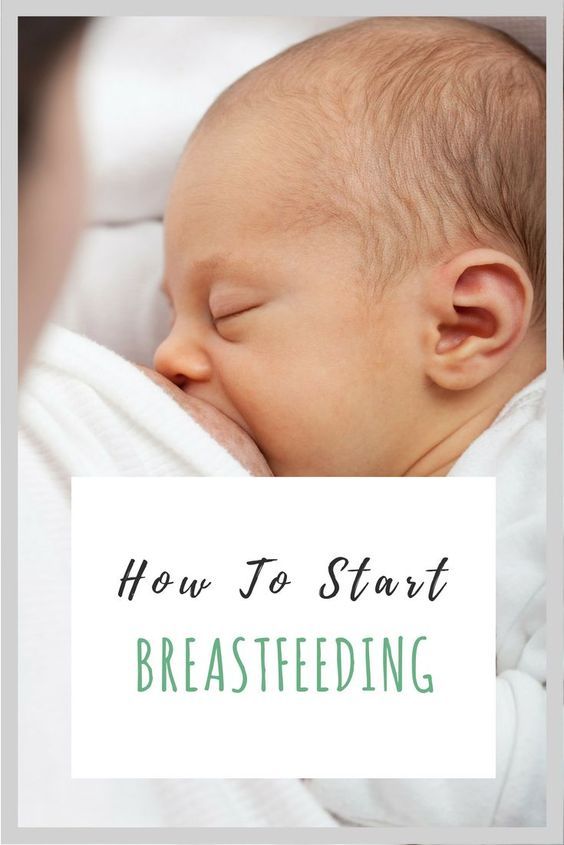 They can climb trees, swim too, but prefer to walk on the ground.
They can climb trees, swim too, but prefer to walk on the ground.
Stoats are solitary. They settle not far from water bodies - in a hollow, and often in someone else's hole (they do not build their own houses). At the same time, they themselves do not let anyone into the territory occupied by themselves, “marking” with their smell. The trespassing beast is likely to face a skirmish. And it’s better for a person not to come close - if he is cornered or angry, the ermine will not be afraid to attack.
There are a lot of cubs in a brood of ermine - up to 20. Moreover, the pregnancy of an ermine sometimes lasts longer than that of a person - up to 10 months. Animals build nests for the time of rearing offspring - often in their hole or a pile of deadwood. The inside is softly lined with bird feathers, down and hair of small animals. Cubs are born tiny - a few grams, blind, deaf and without teeth.
A caring mother almost never leaves the nest in the first days of her children's life, and in case of danger she carries the entire brood in her teeth and even swims with her cubs for short distances on her way to a new shelter. Stoats feed on mother's milk for two months, but then they spend several months next to her, learning to hunt from her.
Stoats feed on mother's milk for two months, but then they spend several months next to her, learning to hunt from her.
Short thick ermine fur very expensive. Ordinary people cannot afford ermine outerwear. Even the Queen of England is allowed to have only one ermine robe. Because of the hunting of these animals, they are becoming less and less.
Even in the Middle Ages, people tried to tame stoats, but little came of it. Animals mostly grow up wild, even if they were born already in captivity, and even attack other pets: hamsters, fish, hand mice.
Sable
Sable hunting has long been widespread in our country. Sable skins (sable fur is thick, delicate, warm and looks luxurious, especially in winter) were presented by the kings as a gift to eminent foreign guests. Now hunting has significantly reduced the number of sables, and you can meet them extremely rarely.
These beautiful fast animals live in old stumps, hollows of trees not high above the ground.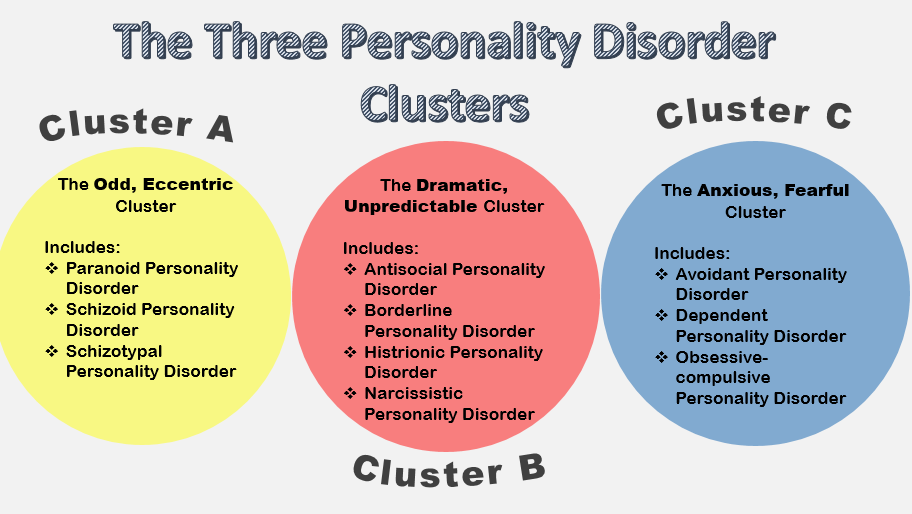 Sables are dark brown or light brown, with a yellowish spot on the chest and neck, round ears, wide paws and a fluffy tail.
Sables are dark brown or light brown, with a yellowish spot on the chest and neck, round ears, wide paws and a fluffy tail.
Sables are excellent tree climbers, but mostly they move along the ground or trunks of fallen trees and snags. In winter, the sable does not hibernate, only waits out the bad weather in the shelter. The animal can also run under the snow - his fur coat is warm, and the enemies will not get there. Yes, and hunting is convenient - sables go hunting both day and night. Their main prey are mice, moles, shrews.
Sables strictly divide the territories for hunting between relatives. If an opponent encroached on his territory, the beast can fight him.
Sable cubs are born in spring, feed on their mother's milk and remain blind for a whole month. The father brings the babies food. Only in autumn do sables begin to live and hunt on their own.
Sable does not attack a person first, but it is still not necessary to provoke him. An animal can perceive excessive attention as a danger.
Raccoon
This cute-looking animal is easy to distinguish by the black stripe on the muzzle through the eyes, resembling a mask, and dark stripes on the fluffy tail. The raccoon is similar in size to a dog, its fur is always thick and long. Raccoons can swim and climb from branch to branch - their paws are dexterous and tenacious. Animals skillfully "fish". Before eating, the raccoon, the most famous species of raccoon, rinses food in the water with its front paws. Sometimes he even bathes his cubs this way.
Raccoons are born in the spring - blind. After two months of feeding with mother's milk, they grow stronger and leave the hole, but do not go far from their parents all year.
You can meet a raccoon not only in the forest, but in the village, at the dacha and even within the city - especially on the side of the road. In search of food, they can climb far enough. Sometimes they live in barns and sheds, in the hayloft. They prefer loneliness, but in winter they can sleep in burrows or hollows with whole families.
It is better not to approach a wild raccoon - he can bite even without a reason, and also carries rabies and tetanus. If a raccoon wanders into your dacha and steals your crops, he should leave food slightly away from the house. Then the raccoon will be kinder and stop stealing your berries and fruits.
Raccoons are quite trainable, so you can see them in the circus.
Weasel
This flexible animal with a thin long body and short legs moves funny - jumping. The weasel has small round ears, a blunt and slightly bifurcated nose and sharp claws. The top of the head, back, sides, tail and paws are brownish on the outside of the weasel in summer, and the throat, chest, abdomen and paws are white on the inside. In autumn, the animal “dresses” in absolutely white fur.
Weasel looks like a stoat, but it is smaller, it has a one-color and shorter tail, which lacks a black tassel.
Weasels often live in colonies - in hollows, burrows, under stones.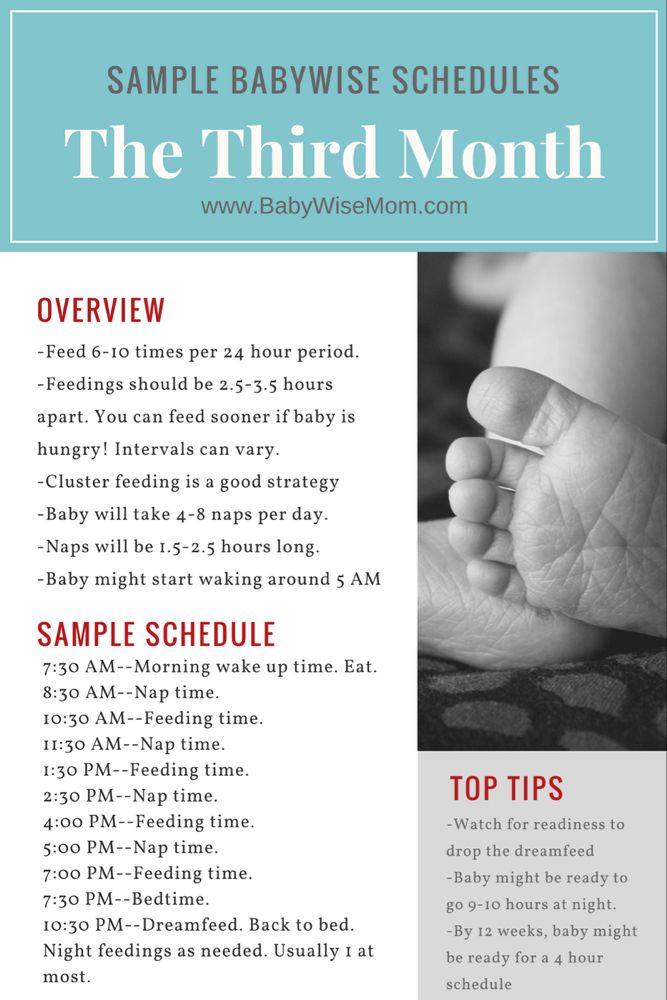 They do not avoid settlements, but they do not attract attention to themselves and infrequently make sounds. But they hiss when in danger and "chirp" when they attack.
They do not avoid settlements, but they do not attract attention to themselves and infrequently make sounds. But they hiss when in danger and "chirp" when they attack.
Weasel is a fast, aggressive and bold predator. She hunts day and night, mainly on small animals: mice, rats, jerboas, moles, rabbits, chickens, pigeons. And also - on lizards, insects and even snakes. The weasel itself, due to its dexterity, can sometimes fight off even a large predator.
She bears cubs for 5 weeks and gives birth in the middle of spring. If they are suddenly in danger, the caress in the teeth will carry them to another place.
By the way, in ancient Rome and even early medieval Europe, weasels were pets and protected the owner's stocks from mice. But the weasel is difficult to tame, and besides, the gray rats, which appeared later in Europe, were more difficult for her to cope with. Therefore, weasel was replaced by other domestic animals, including cats.
Weasels do not attack humans, but, like many wild animals, they can serve as carriers of dangerous diseases.
Deer
There are many varieties of deer. Although we are used to imagining a beautiful large animal with branched horns, there are also spotted ones - smaller, and even very small ones - the size of a cat. And, by the way, only males have horns. They shed their antlers every year and new ones grow in their place.
The deer has slender legs and large round eyes, thanks to which the animal has excellent eyesight. The sense of smell and hearing are also very acute.
Deer live in herds - not only in the forests, but also in the mountains on the slopes, in thickets of bushes, in clearings with tall grass. In hot weather, they like to swim, escaping from the heat and midges. They love salt - and regularly visit salt licks.
Wolves prey on deer. Strong hooves and antlers usually help a healthy deer fend off an attacker. The deer themselves are quite peaceful - they feed mainly on berries, mushrooms, grass, nuts, chestnuts, bark and branches.
Autumn is the mating season for deer. During this period, in some forests at dawn, you can hear the unique roar of a red deer for kilometers. It reminds either playing the trumpet, or the mooing of a cow, or loud sighs. Deer are born spotted (spots disappear in adult deer) and often with a light spot at the tail. Newborn fawns lurk in the grass while their mother grazes nearby. The deer communicates with the fawn, "bleating".
During this period, in some forests at dawn, you can hear the unique roar of a red deer for kilometers. It reminds either playing the trumpet, or the mooing of a cow, or loud sighs. Deer are born spotted (spots disappear in adult deer) and often with a light spot at the tail. Newborn fawns lurk in the grass while their mother grazes nearby. The deer communicates with the fawn, "bleating".
In general, deer rarely chase people, but become more aggressive during the "weddings".
Sika deer hunting is prohibited. At the same time, pantocrine is made from deer antlers - a medicine that helps with neurasthenia, asthenia (a state of weakness, exhaustion, increased fatigue), and so on. And in the East it is believed that pantocrine helps to preserve youth and strength.
Badger
An animal with a long narrow muzzle and dark stripes stretching from eyes to ears crawls out of a hole at night to hunt. He hunts rodents, also eats frogs, birds and bird eggs, lizards, insects. He does not disdain mushrooms, nuts, berries and even grass, but still prefers animal food. For humans, the badger is basically not dangerous.
He does not disdain mushrooms, nuts, berries and even grass, but still prefers animal food. For humans, the badger is basically not dangerous.
The coat of badgers is dense, the body is narrow in front, widens towards the tail. The paws are short, but strong and clawed - for digging the ground in search of beetles and for burrowing. Badger burrows are distinguished by comfort, sometimes they are very deep and even several "floors". Badgers regularly ventilate and dry the “litter” of grass and dried leaves from the outside.
By cold weather, badgers get very fat - sometimes twice. Like many forest animals, they hibernate and accumulate fat in advance.
Badgers are born blind, their mother feeds them with milk. And it’s also useful for the cubs to be in the sun, so the mother sometimes takes them out for “sunbathing”.
As you can see, our forests are rich in fauna, but most of the animals tend to avoid people (and often this is for the best for both parties).



